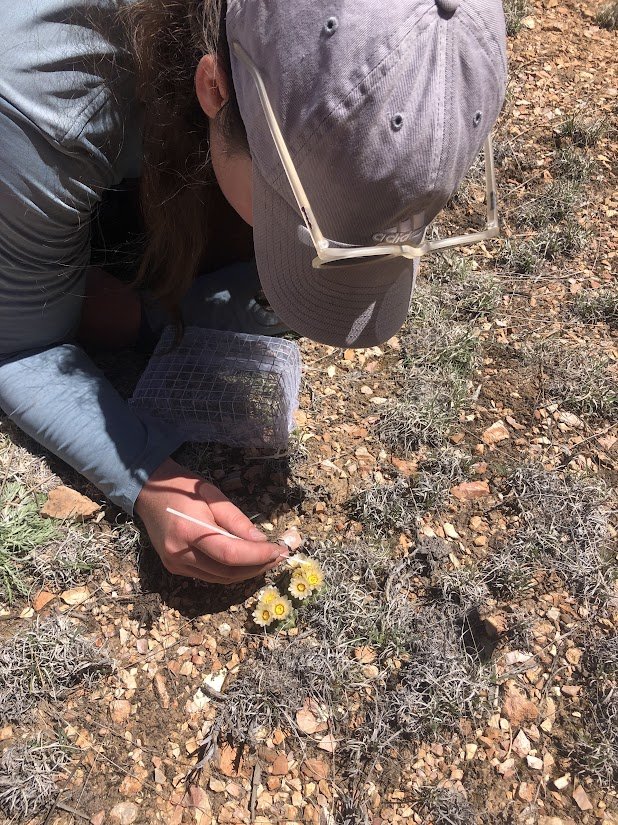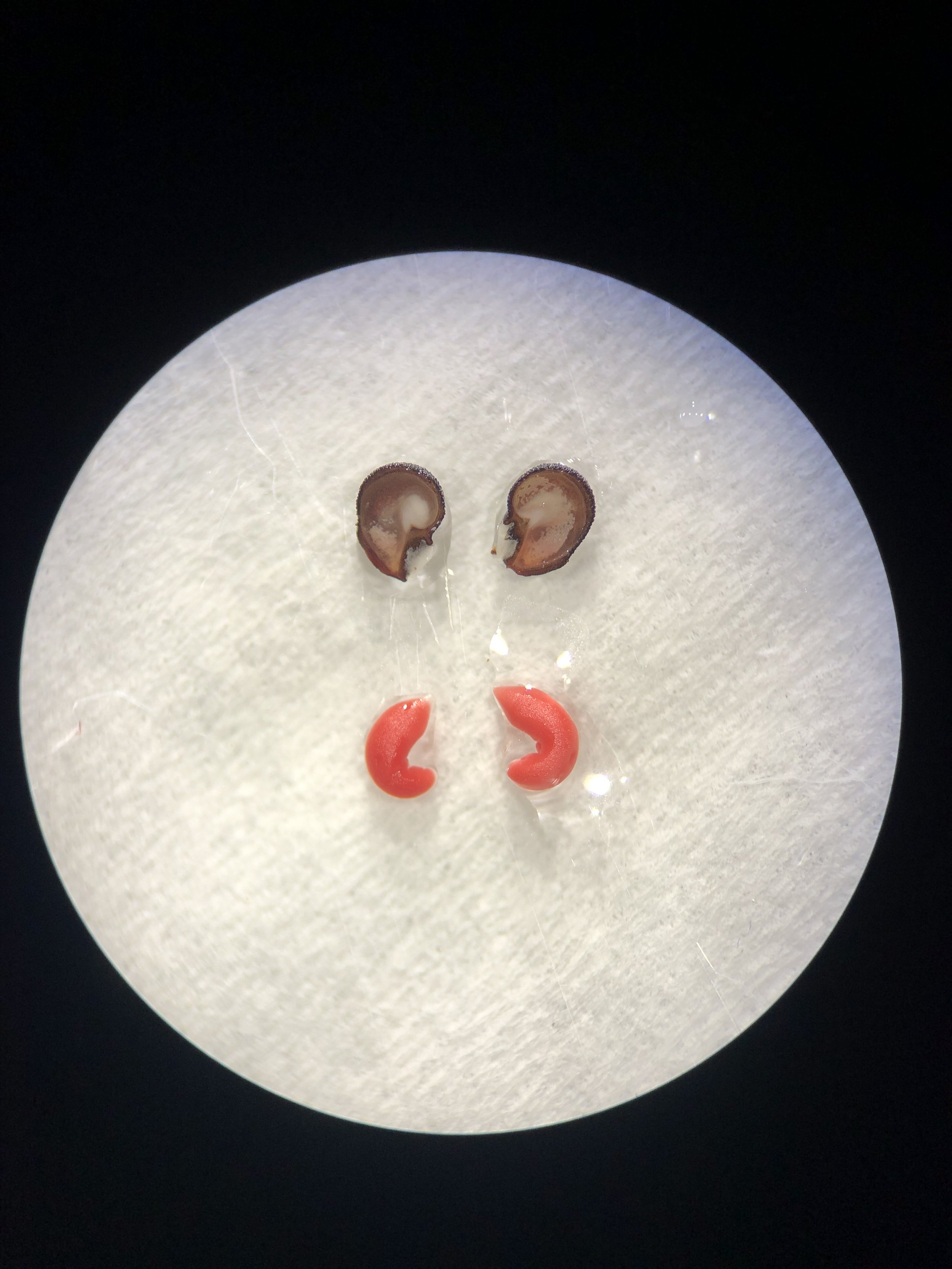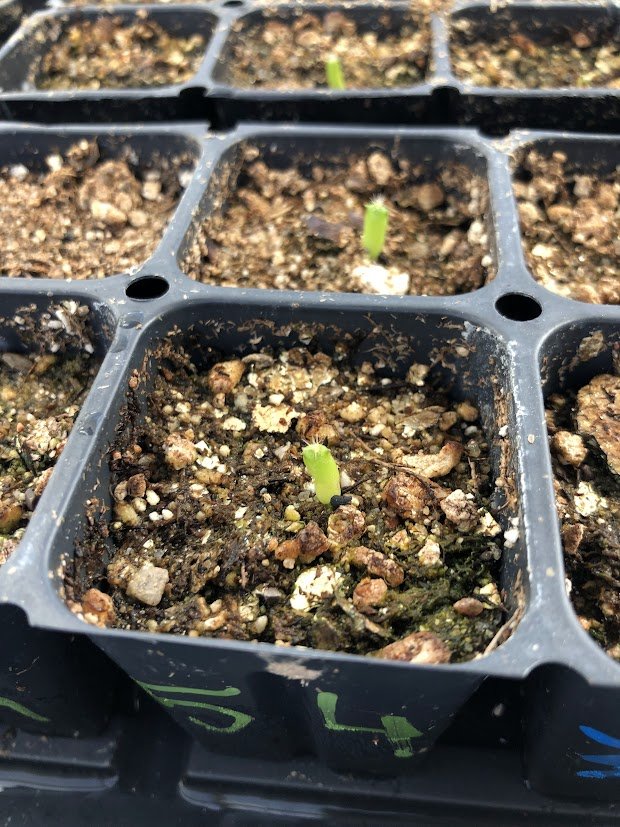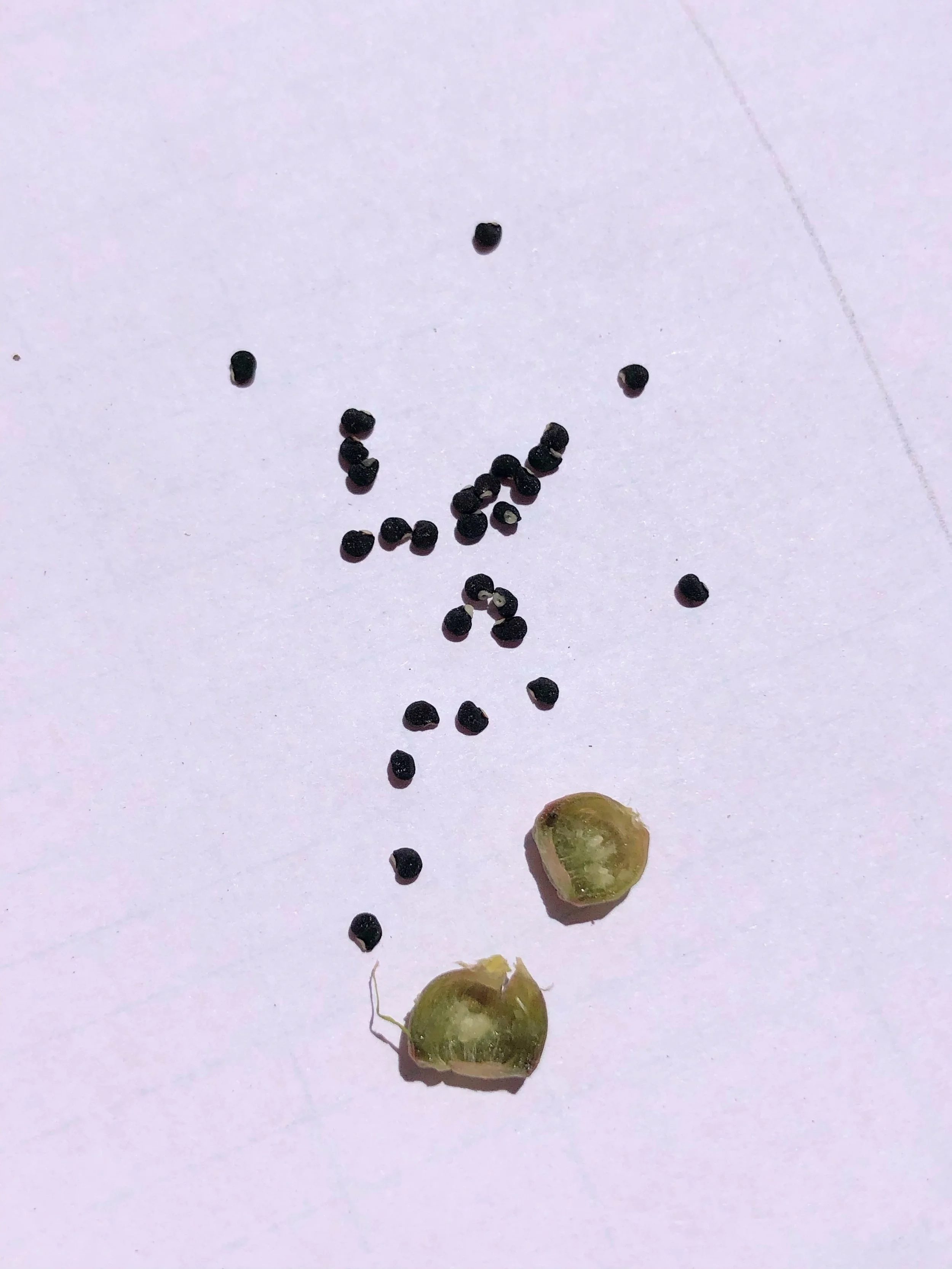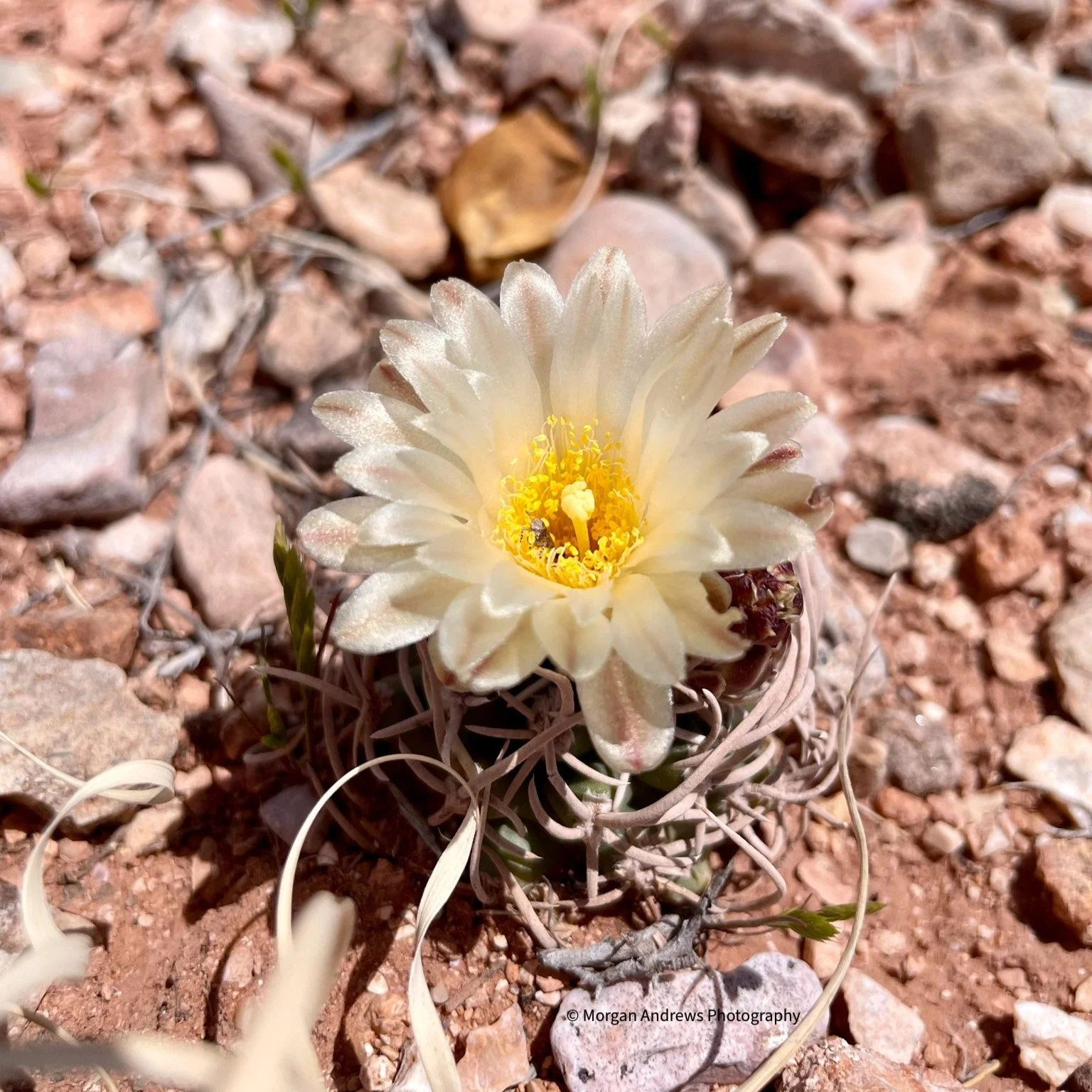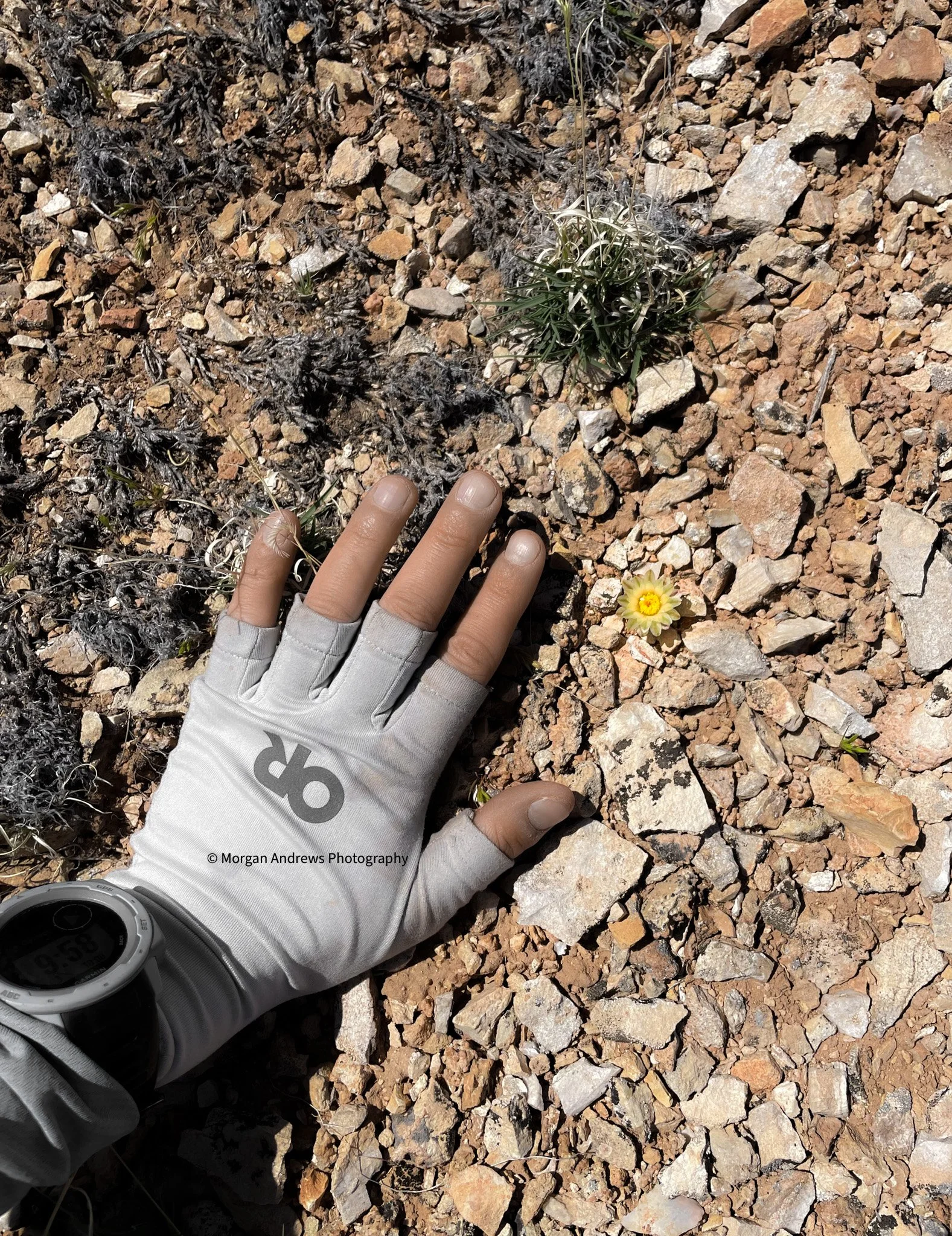THREATENED AND ENDANGERED PLANTS
Pediocactus peeblesianus var. fickeiseniae
Fickeisen plains cactus
&
Pediocactus paradinei
Paradine plains cactus
The conservation of rare plant species may require attention to the disruption of plant-pollinator interactions, as rare plants may be especially vulnerable to pollinator limitation due to their small population sizes and often narrow habitat requirements. In the House Rock Valley and Kaibab Plateau region of northern Arizona, the recovery of two species of endemic cacti may depend on the conservation of their pollinators. The closely related Pediocactus peeblesianus var. fickeiseniae (generally known as Fick), a federally endangered species, and P. paradinei, a species of concern, have exhibited population declines and likely rely on insect pollination. However, little is yet understood about the cacti’s pollination and reproductive biologies. Meanwhile, low rates of pollinator visitation have already been observed, potentially due to declines in pollinator abundance and diversity in the region. The investigation of the cacti’s pollinators, pollination rates, level of self-compatibility, reproductive output, and reproductive challenges through observational studies, pollination treatment experiments, and collections of pollinators, fruits, and seeds directly addresses the critical research needs of the cacti. Understanding the cacti’s pollination and reproductive biologies is crucial for the continued and improved management and conservation of both species, which may be missing a crucial component—the conservation of the plants’ pollinators.
The endangered Fickeisen plains cactus occurs in northern Arizona on both rims of the Grand Canyon. Individuals can be found on limestone outcroppings within a matrix of soft sediment in shrub- and bunchgrass-dominated, high desert habitat. Individual Fick individuals are remarkably small at maturity, ranging from approximately 2.5-10 cm in diameter and 1-4 cm in height. Plants produce relatively large, saucer-shaped, white to yellow flowers in March-April. The total estimated population of Fick at present consists of around 1150 individuals. The species was declared federally endangered in 2013 as a result of a combination of threats including fragmentation and distance between populations, removal by cactus collectors, small mammal predation, drought and climate change, small population size, and disturbance/grazing by livestock. We are working to understand current pollination dynamics for the cactus, as well as to define the breeding system and understand the effects of disturbance and climate fluctuation on reproductive rates. We are also resampling plant and soil data at a broad network of points that were established in the early 2000s across the North Rim of the Grand Canyon. By evaluating change over time at these locations, we are assessing responses of the full ecosystem, including the pollinator community, to climate change, fire events, and changes in grazing over the past two decades
-
Clare Aslan, PhD
Associate Director and Associate Professor, School of Earth and Sustainability
Co-Director, Center for Adaptable Western Landscapes, Northern Arizona University
-
Olivia Steinmetz
MS in Environmental Science and Policy
Products
